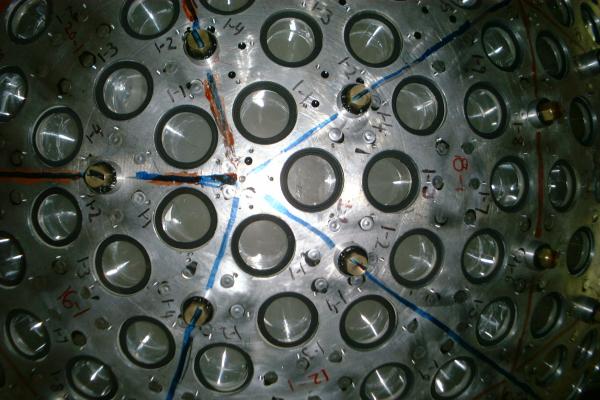Mesons, Nucleons and Nuclei

- How do nuclear forces arise from QCD?
- What is the equation of state of nuclear matter?
Pions are the force carriers of the strong nuclear interaction at low energies and long distance scales. Their exchange dominates the nucleon-nucleon and three-nucleon interactions that determine the properties of nuclei. They are therefore the vital ingredient in chiral effective field theories, which have made it possible to perform ab-initio calculations on nuclei. This same pion field gives rise to the concept that low energy nucleon structure includes a pion cloud.
Our research on this theme investigates the crucial role of the pion in determining the properties of nucleons and nuclei, in the energy regime where the relevant degrees of freedom are meson-baryon rather than quark-gluon, and is mainly conducted in the A2 hall at the Mainz Microtron (MAMI). We are making use of its tagged photon beam facility (energy range 40 - 1595 MeV) and the very high-acceptance Crystal Ball and TAPS detector assembly, which is optimised for photon detection, to lead the effort in three main experimental projects:
1. Compton scattering on nucleons and light nuclei to obtain the nucleon polarisabilities. These fundamental structure parameters specify the rigidity of the composite nucleon with respect to distortion by the electromagnetic field of the photon. Interpretation of the data relies heavily on chiral effective field theory (χEFT), which is the low energy derivation of QCD.
2. Investigation of the neutral mesonic decay modes of η and η′ mesons to obtain information on meson-meson interactions. Subtle kinematic correlations between the final-state decay mesons yield the π − π and π − η scattering lengths, which present a fundamental test of chiral effective field theory calculations.
3. Coherent (γ,π0) photoproduction on complex nuclei to obtain neutron density distributions. The thickness of a "neutron skin" in complex nuclei is the subject of much theoretical debate and has important implications for the structure of bulk nuclear matter systems such as neutron stars.

